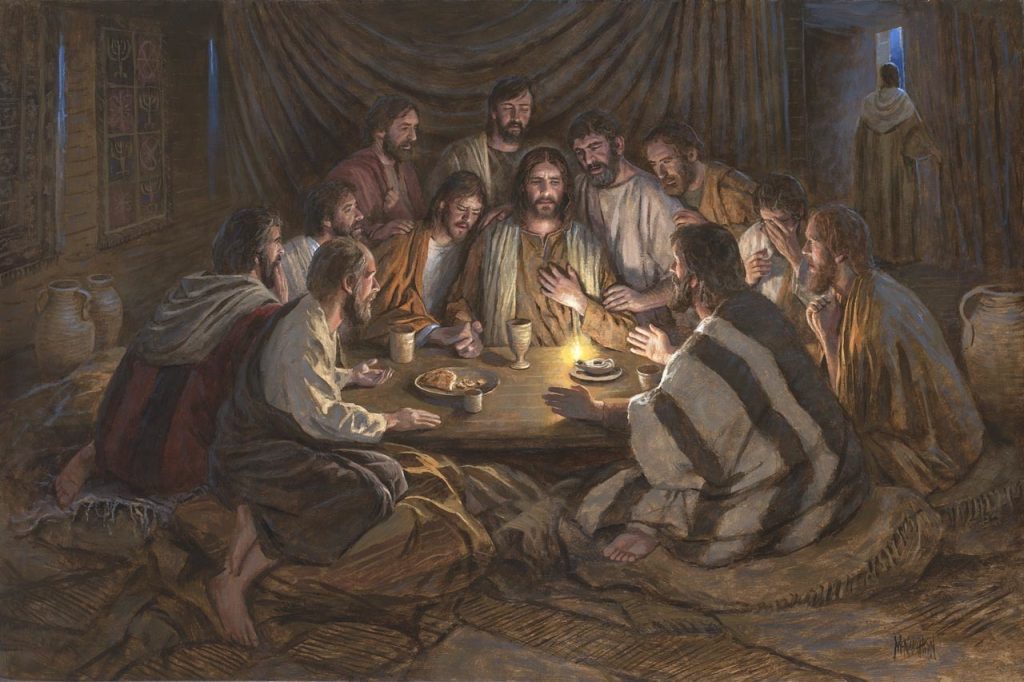

Understanding the Eucharist
Eucharist
REMEMBERING THE LAST SUPPER: PARTICIPATION IN THE CELEBRATION OF THE EUCHARIST
Church tradition teaches that the origins of the Eucharist are to be found in the Last Supper of Jesus and how the early community obeyed Jesus’ command to ‘break bread’ in His name (Acts 2: 42). This remembering of the Last Supper became a central ritual for Christians when they gathered together. In the earliest times, the Eucharist was celebrated along with a shared meal in the homes of local Christians.
In his First Letter to the Corinthians, Paul describes a Eucharist celebrated in connection with a common supper shared in the homes of the Early Christians. This supper included the blessing of the bread and wine, the breaking of the bread, and Communion. As the numbers of Christians grew, the Eucharist as a sacred meal separated from the common meal.
Believers today still remember and celebrate the Last Supper on Holy Thursday. For Jews, this time is the beginning of the Jewish Passover Festival. The bread and wine are symbols of nourishment and food for the Christian journey.
Believers take part in the Eucharist to give thanks to God, and share this meal as a community. In community believers gain strength from each one who has gathered.
The obligation for all Catholics to attend and participate in Sunday Mass is built on the belief that without the Eucharist we cannot effectively be the Church for ‘cut off from Christ we can do nothing’. This obligation is based on two commands:
- The command of Jesus: ‘Do this in [memory] of me’ (Luke 22: 19), which he gave to his followers at the Last Supper;
- The third of the Ten Commandments: ‘Remember the Sabbath day, and keep it holy’ (Exodus 20: 8), which is now celebrated on a Sunday to remember the Resurrection of Jesus on that day.
The Eucharist deepens union with Christ and calls us into communion with one another. The Eucharist remits sin and calls us to a deeper conversion in Christ.
So Jesus said to them, ‘Very truly, I tell you, unless you eat the flesh of the Son of Man and drink his blood, you have no life in you. Those who eat my flesh and drink my blood have eternal life, and I will raise them up on the last day; for my flesh is true food and my blood is true drink. Those who eat my flesh and drink my blood abide in me, and I in them. (John 6:53–56)
When people see a gathering of Church members, such as at Mass, they see the Body of Christ. This is a sign of the invisible reality that these people are in spiritual union with Christ.
People throughout the world gather for Mass. This is because the Church includes people from different nationalities, cultures and ethnic groups. Catholics all over the world are a sign of Jesus drawing together people of all nationalities, bringing them closer to God and to each other.
The four qualities of the Church are that as a community it is:
- One
- Holy
- Catholic
- Apostolic
Catholics express their belief in these central teachings about the qualities of the Church when they pray The Apostles’ Creed. The Apostles’ Creed is an early formulation of the Church’s basic belief dating from the time of the apostles. The Nicene Creed draws from the wisdom of the first two ecumenical Councils in 325 and 381.
#ExpectGreatThings


© Infant Jesus School 2017
17 Smith St, Morley WA 6062
Tel: (08) 9276 1769 | Fax: (08) 9276 2998
Website by Chameleon Logic








